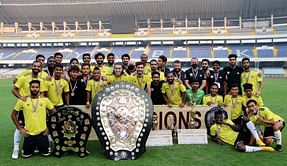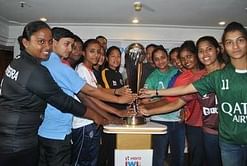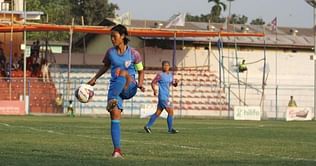On 23rd June 2018, the All India Football Federation will complete an impressive 81 years in operation. Looking back, despite all the hurdles, the organization has come a long way since it was formed way back in 1937.
From merely being a stop-gap solution, the AIFF has established itself as a premier sporting body and has helped Indian football reach massive heights despite the various hurdles associated with the sport in India.
On 23rd June 2012, legendary striker Chuni Goswami unfurled the AIFF flag, celebrating the organization's 75th anniversary in Delhi. Given the massive strides and developments that have taken place in recent times, it’s only right we look at the history of the AIFF, from its inception to its modern-day persona.
Despite being officially formed in 1937, it was only in 1948 that AIFF began its association with FIFA. That was the moment when it cemented itself as a professional organization with aspirations of meeting global standards.
The seeds of this watershed moment were sowed in Simla a decade earlier - 1937, to be precise. After several meetings and brainstorming sessions at the city's Army Headquarters, six regions decided to come together and create a ruling body for the sport of football in India.
The Indian Football Association (IFA), The Bengal Football Association, Bihar, Delhi, North West Football Association and United Provinces successfully came to a consensus and formed the AIFF on 23rd June. The Headquarters of the AIFF is currently in Dwarka, New Delhi.
Before the AIFF came into being, football in India was primarily looked after by the IFA, which was not an official organization but one that received the support of fans and players across the country. The IFA was formed in 1893 and had a heavy presence in the state of Bengal. However, it was affiliated with the English FA, which was the reason for the heavy British presence in the organization.
Realizing the need for an official organization, the IFA proposed a plan and invited the above mentioned six bodies and formed what was initially known as the AIFA - the All India Football Association.
The rise of the AIFF in 1948 coincided with India’s participation at the London Olympics that very same year. Under the tutelage of Balai Das Chatterjee, the country’s first national coach, India went down 1-2 to France.
After the quadrennial event, the national team finally found an identity and began touring neighboring countries. It’s safe to say the Olympics acted as a catalyst for the growth of the sport in India, and the AIFF began to invest more time and resources to ensure the national team’s consistent growth.
In 1949, India travelled to Sri Lanka and Afghanistan and in 1950 The Blues gained automatic qualification to the World Cup which was held in Brazil. However, India failed to gain entry into the final round owing to the lack of funds and the organization’s failure to view the World Cup as a serious sporting tournament. Back then, the Olympics was seen as the holy grail for all sports.
But the AIFF made an important decision by finally making it compulsory to wear boots during every match, and adhering to the international standards with respect to the size of a football ground. From being an amateur body in 1937, the AIFF transformed into a serious and professional sporting body. The good and bad experiences between 1948-1952 acted as the catalyst for that.
Fast forward to 2017 and the AIFF is well and truly in top gear, having introduced multiple schemes that have had a positive snowball effect on football in India. It has also introduced leagues for the U13, U15 and U18 categories, with more than 200 teams participating in the tournament.
Realizing that children ought to play the game much before the age of 13, the AIFF has made it clear that it will be introducing leagues for children below the age of 10 as well. By doing so, they would ensure that players play their first competitive game at a pliable age rather than waiting till they are already fully matured.
Minerva Punjab have established themselves as the top team in the country in this regard, as they have won the age-category tournaments for three years in a row now. In fact, they are the only Indian club to win the league both at the senior and the junior level.
There is no denying the fact that despite facing stiff criticism for some of its decisions, the AIFF as the apex body for football in India has made impressive strides at the senior and junior level. The introduction of an official women’s committee is a welcome move and one that is the need of the hour given the interest shown in the game by individuals that span across age and gender.
These steps will only go on to help Indian football grow even further.









